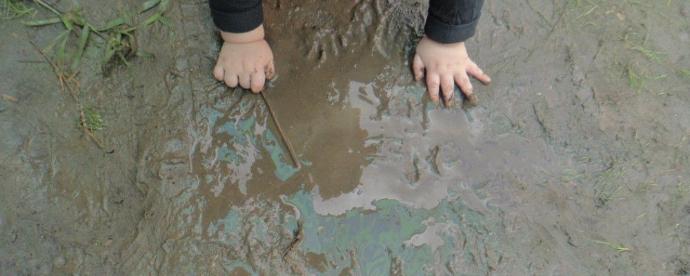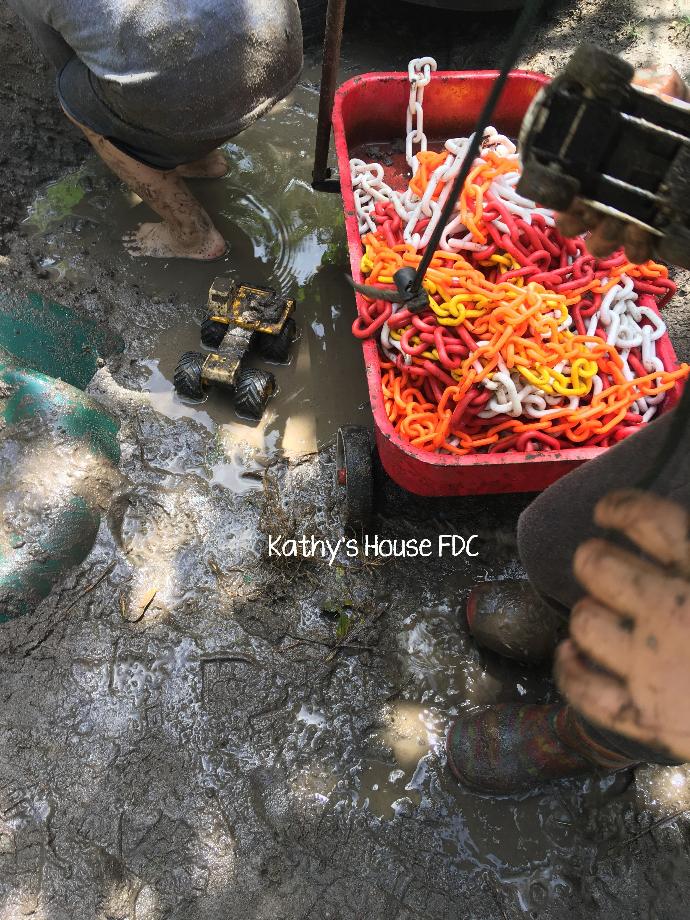
Herein lies my problem. I’ve noticed many other early education environments and educators do not allow this sort of play and I’m wondering why. What happened to early education in this country before the Early Years Learning Framework asked us to reflect upon everything, even those things that have always been done that way?
Why does it seem that muddy play was outlawed?
Why are some educators still resisting children’s natural gravitation to this sort of play?
Are we afraid of the mess?
Are we afraid of what parents think?
There is no longer any argument around the fact that outside play is vital for child development. Guess what? Nature-deficit is actually a thing! There is even evidence to show that playing in the dirt or mud is beneficial for a child’s immune system. In fact, the National Wildlife Federation in their down to earth article (pun intended), The Dirt on Dirt (2012), cite Dr. Joel Weinstock, director of gastroenterology from Boston, who says, “Children raised in an ultraclean environment are not being exposed to organisms that help them develop appropriate immune regulatory circuits.” The article goes on to argue that getting messy outside benefits the heart, skin, immune system, mental health, and mood, so, for the health of it, and the fun of it, children should be outdoors, barefoot, playing in the dirt.
In addition to the health benefits of exposing children to the natural environment, the sensory and developmental benefits are indisputable. Mud in all its glory has infinite learning possibilities. We know that open-ended materials and natural sensory stimulation allows for endless exploration and engages children in lengthy involved play. We know that given a child led pedagogy and a puddle, children will naturally gravitate there given the opportunity. We are aware of good practices such as the Reggio approach which suggests that we value the environment as the third teacher. Our curriculum decisions are now guided by the Early Years Learning Framework which asks us to create opportunities for children to connect with their natural world and environment. How can we do this from a sterile, air-conditioned room with smooth clean surfaces? Mud play seems common sense now doesn’t it?
If children in your early education setting are not “allowed” to play in the mud, get dirty or run in the warm summer rain, I would like to invite you, my fellow educators to reflect on your knowledge and experience. We, the reflective practitioner, gather expert knowledge of early education and care as we learn, explore and reflect on our practices within an approved learning framework and a quality standard founded in solid theory and research. It is our duty to educate our families on contemporary learning practices and the benefits, and learning objectives of messy play.
As for me, I am going to continue to get mud between my toes and giggle with a child as he revels in the delight and simplicity of mud. I will continue to grow and change as an educator but authentic, natural learning environments and evidence-based practice will always guide my pedagogy and practice.
Author: Ashleigh Smith Contributor: Sandi Phoenix
